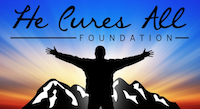
Click here to help toxic disease sufferers
How I Cured Morgellons
|
|
|
|
|
|
Jen 6/21/2025 4:53:46 AM MST |
Everything You Should Know About the Longest Day of the Year Summer Days are here! Summer begins with the solstice on Friday, June 20, 2025, marking the astronomical first day of summer in the Northern Hemisphere. What exactly IS the summer solstice? Is it really the longest day of the year? Welcome the solstice with some interesting facts and folklore. The June Solstice In the Northern Hemisphere, the June solstice (aka summer solstice) occurs when the Sun travels along its northernmost path in the sky. This marks the astronomical start of summer in the northern half of the globe. (In the Southern Hemisphere, it’s the opposite: the June solstice marks the astronomical start of winter when the Sun is at its lowest point in the sky.) When is the Summer Solstice? The June solstice occurs on Friday, June 20, 2025, at 10:42 P.M. EDT. This solstice marks the official beginning of summer in the Northern Hemisphere, occurring when Earth arrives at the point in its orbit where the North Pole is at its maximum tilt (about 23.5 degrees) toward the Sun, resulting in the longest day and shortest night of the calendar year. (By longest “day,” we mean the longest period of sunlight hours.) On the day of the June solstice, the Northern Hemisphere receives sunlight at the most direct angle of the year. In the Southern Hemisphere, the June solstice marks the beginning of winter. What Is the Summer Solstice? In the Northern Hemisphere, the June solstice (aka summer solstice) occurs when the Sun reaches its highest and northernmost points in the sky. It marks the start of summer in the northern half of the globe. (In contrast, the June solstice in the Southern Hemisphere is when the Sun is at its lowest point in the sky, marking the start of winter.) Solstice comes from the Latin words sol (“sun”) and sistere (“to stand still”). Due to Earth’s tilted axis, the Sun doesn’t rise and set at the same locations on the horizon each morning and evening; its rise and set positions move northward or southward in the sky as Earth travels around the Sun through the year. Also, the Sun’s track in the sky becomes higher or lower throughout the year. The June solstice is significant because the Sun reaches its northernmost point in the sky at this time, at which point the Sun’s path does not change for a brief period of time. After the solstice, the Sun appears to reverse course and head back in the opposite direction. The motion referred to here is the apparent path of the Sun when one views its position in the sky at the same time each day, for example, at local noon. Over the year, its path forms a sort of flattened figure eight, called an analemma. Of course, the Sun itself is not moving (unless you consider its orbit around the Milky Way galaxy); instead, this change in position in the sky that we on Earth notice is caused by the tilt of Earth’s axis as it orbits the Sun, as well as Earth’s elliptical, rather than circular, orbit. Does the Solstice Always Occur on the Same Day? The timing of the June solstice is not based on a specific calendar date or time; it all depends on when the Sun reaches its northernmost point from the celestial equator. Therefore, the solstice won’t always occur on the same day. Currently, it shifts between June 20, 21, and 22. The Year’s Longest Day The Summer Solstice is the day with the longest period of sunlight. Notice how the Sun appears highest in the sky at the solstice; its rays strike Earth at a more direct angle, causing the efficient warming we call summer. For those locations at the Tropic of Cancer and northward, the Sun is highest in the sky on the June solstice, and you’ll notice that your shadow (at local, or solar, noon, not clock-time noon) is the shortest that it will be all year (in fact, at the Tropic of Cancer there will be no shadow). [Local noon is when the Sun crosses the local meridian (an imaginary line between the North and South poles) and is highest in the sky for the day.] For those who live in the Southern Hemisphere, the June solstice is the shortest day of the year and marks the arrival of winter. Fun Fact… The solstice on Friday, June 20, 2025, happens at the same instant for all of us, everywhere on Earth; only our clocks are different. In the eastern United States, the solstice occurs at 10:42 PM EDT. On the solstice, the Sun reaches its northernmost position, reaching the Tropic of Cancer and standing still before reversing direction and starting to move south again. (See illustration above.) In fact, that’s how the Tropic of Cancer got its name. A few thousand years ago, the solstice happened when the Sun was in the constellation of Cancer the Crab. As a bonus, here are two additional Sun-themed facts: 1. The kind of energy the Sun emits most strongly is not ultraviolet, gamma rays, or even visible light—it’s actually infrared. That’s the Sun’s strongest emission, which is the kind we feel as heat. 2. As for the Sun’s visible emissions, its strongest is the green light. That’s why our eyes are maximally sensitive to that color. Careful of your eyes! And have some fun wherever you are spending time. Peace and health, Jen | |||
2025 © All Rights Reserved.
